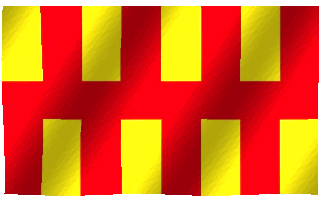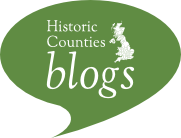
Although not registered as a “traditional” design, Northumberland’s flag is of ancient origin and in essence is certainly part of a local tradition, of some ancient standing. The Venerable Bede, England’s first historian, records a banner of purple and gold which hung over the tomb of St Oswald, the 7th century king of Northumbria. The flag for this ancient kingdom is now generally regarded as having 8 alternate stripes of red and gold (yellow). Later, in medieval times, the colours were adopted by the first Earl of Northumberland. The modern version, a banner of the arms of Northumberland County Council, features these traditional “pales” of Northumberland interlocked to represent the stones of Hadrian’s Wall which runs through the county. The arms were granted in 1951. As noted, under heraldic law, such a banner is the strict property of the armiger (arms holder), but the County Council “released” the banner for general use by Northumberland folk in 1996 and the Flag Institute duly registered it, noting in doing so, that Northumberland is wider than the county council area. The registration of the Northumberland flag fulfils a 1,200-year tradition of the county’s association with the colours red and gold. Additionally, these arms being unusually uncomplicated, are easily rendered as a flag unlike most such council arms. The motivation to release the flag to the public was obvious, in essence the pattern had been used in the county in one form or another for centuries and there was a clear and evident association of the pattern with the county, akin to that of Essex and its seaxes for example.
